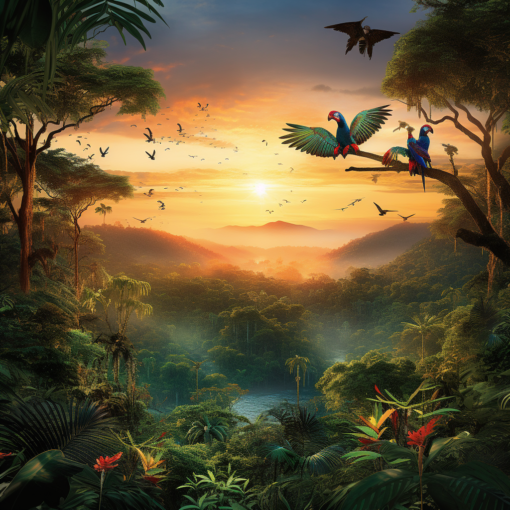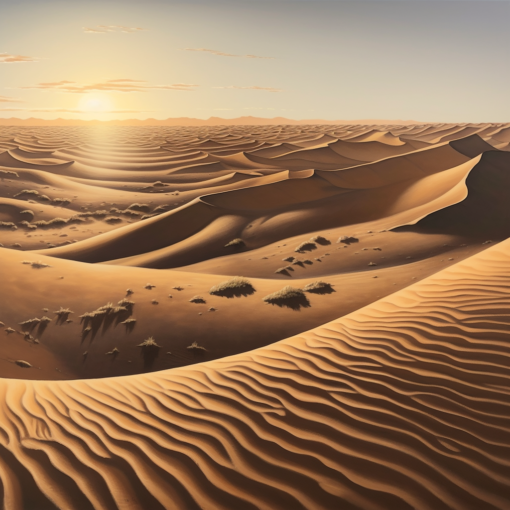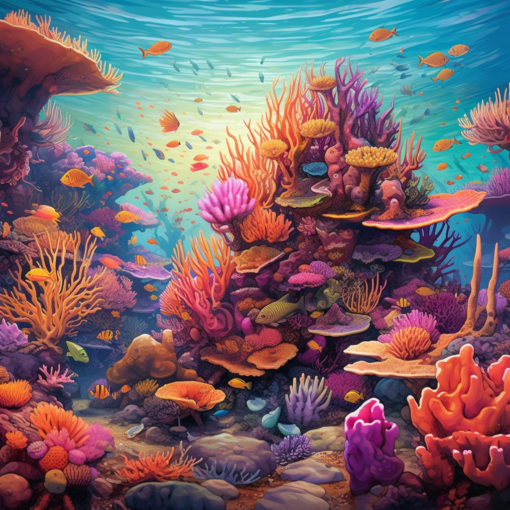Glaciers are nature’s enigmatic sculptures, honed not by the hand of an artist, but by the incessant work of time and weather. They are the Earth’s great shapers, and their presence tells a tale of eons. Today, my dear readers, we’ll be embarking on a journey to unveil the mysteries locked within these frozen titans.
A glacier is born in a process known as firnification. This is where our tale begins, in regions so cold that snow remains throughout the year, gradually compressing into ice. Over time, layer upon layer forms a tapestry of frozen years, a memento mori of snowfall past.
Glaciers are slow and deliberate in their movement, a languid dance choreographed by gravity. As the ice flows, it scoops up rocks, dirt, and other debris, becoming a massive earth-moving machine. This process of plucking and abrasion shapes the landscape, carving valleys and moving mountains – quite literally.
But the power of glaciers extends beyond mere land shaping. They act as colossal freshwater reservoirs, storing about 69% of the world’s freshwater. Imagine that! As climate change forces glaciers to recede, their meltwater contributes to rising sea levels, offering a stark reminder of our interconnectedness with nature.
Even more fascinating is the life that glaciers harbor. Yes, you heard that right! Within these icy giants, a host of microorganisms have set up shop. These psychrophiles, or cold-loving organisms, are some of the hardiest life forms on Earth, defying the odds in an environment that seems to defy life itself.
From providing us with a fresh water supply to housing alien-like life forms, glaciers are more than just static sculptures of ice. They are dynamic and essential components of our planet’s ecosystem. As they retreat, they serve as visual reminders of the importance of our actions and the need to protect our natural world.
So, the next time you behold the sight of a mighty glacier, remember the tale it has to tell. It’s not just a river of ice; it’s a river of life, of change, and of time. From ice to life, the mysteries of glaciers continue to captivate us, beckoning us to look, learn, and appreciate.
Until our next adventure, may your days be full of curiosity and your nights filled with stars. Keep exploring, dear readers.
Yours in wonder,
Percival

Recommended Reading:
- National Geographic – Glaciers: A comprehensive guide from National Geographic that delves into the formation, types, and importance of glaciers in the global ecosystem.
- GlacierHub: A website dedicated to the coverage of all things glacier, including news, studies, and articles focused on the science, culture, and adventures tied to these frozen wonders.
- United States Geological Survey – Glaciers and Climate Change: A detailed article from the US Geological Survey discussing the relationship between glaciers and climate change.





6 thoughts on “From Ice to Life: The Mysteries of Glaciers Unveiled”
Thank you for your sharing. I am worried that I lack creative ideas. It is your article that makes me full of hope. Thank you. But, I have a question, can you help me?
Your article helped me a lot, is there any more related content? Thanks!
The fb77705download was quick and easy. No problems at all. Ready to play now! Download location here: fb77705download.
hello!,I like your writing very a lot! percentage we communicate extra approximately your post on AOL? I require an expert in this house to unravel my problem. Maybe that’s you! Having a look ahead to look you.
789pvip looks interesting, gotta say. Their VIP program seems enticing. Anyone here a member? Wanna hear your experiences with using 789pvip!
This actually answered my downside, thanks!